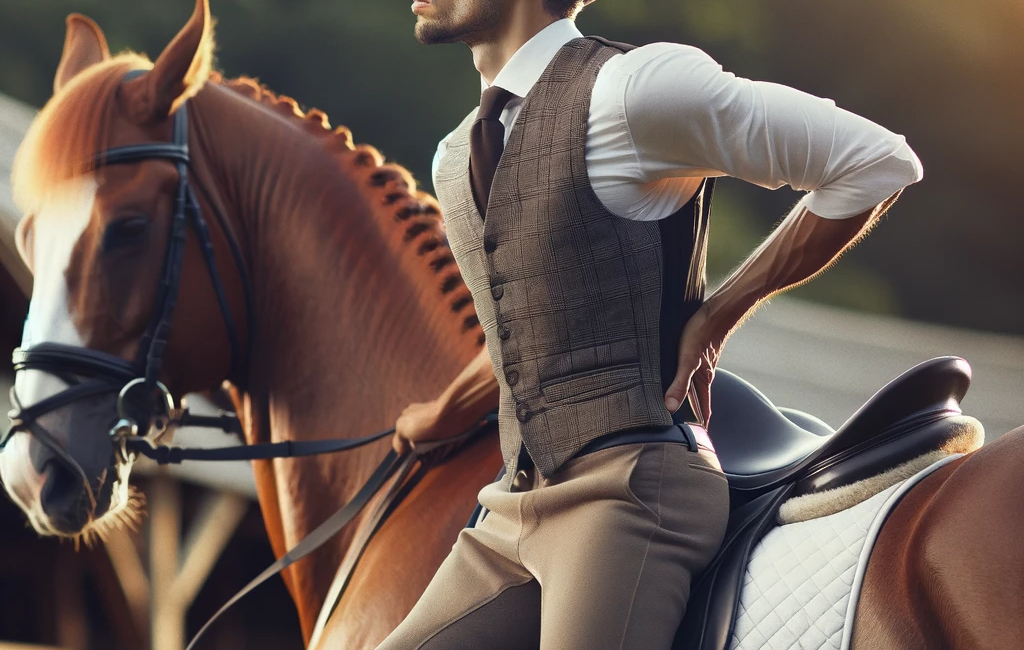Horseback riding, a blend of art, sport, and communication with a powerful animal, brings immense joy and fulfillment to riders worldwide. However, beneath the surface of this elegant sport lies an often-unspoken challenge: back pain. This article explores why horseback riders frequently grapple with back pain and offers insights into managing this common ailment.
The Anatomy of Equestrian Back Pain
At its core, horseback riding is an intensely physical activity requiring balance, strength, and endurance. The rider’s body, especially the back, absorbs the impact and motion of the horse. The jarring movements and the need to maintain posture for extended periods can strain the spine and muscles, leading to discomfort or injury.
Common Causes of Back Pain in Riders
- Repetitive Motion: The rhythmic trotting and galloping patterns can cause repetitive stress on the lower back.
- Impact Forces: Jumping and riding on uneven terrain transmit significant compressive forces on the rider’s spine.
- Postural Strain: Maintaining a specific posture for long durations, often with a curved lower back, can lead to muscle fatigue and strain.
- Asymmetrical Movements: Riders often develop a dominant side, leading to imbalanced muscle development and spinal alignment issues.
Recognizing the Symptoms
Back pain in riders can manifest in various forms – from a dull, aching discomfort to sharp, shooting pains. The pain may be localized to the lower back or spread to the hips and legs. Stiffness and reduced mobility after riding are common signs that the back has been under strain.
Preventive Measures and Pain Management
- Proper Technique: Learning and maintaining correct riding posture is crucial. Riders should seek guidance from experienced instructors to ensure their form is optimal.
- Regular Exercise: Engaging in exercises that strengthen the core and back muscles can provide better support to the spine. Activities like proper stretching, yoga and Pilates can also enhance strength, flexibility, and balance.
- Adequate Warm-Up and Cool-Down: Just like the horses they ride; equestrians need to warm up and cool down their muscles before and after riding. Proper stretching is an excellent way to prepare for vigorous exercise and relax the body after riding.
- Balanced Training: Riders should also balance their time in the saddle with other forms of exercise to prevent overuse injuries.
- Quality Equipment: Using well-fitted saddles and tack can help maintain proper alignment and reduce strain.
- Listening to the Body: Recognizing and respecting the body’s limits is vital. If pain persists, it’s crucial to seek medical advice.
When to Seek Professional Help
If back pain becomes a regular occurrence or interferes with daily activities, it’s essential to consult healthcare professionals. Physical therapists, chiropractors, or sports medicine specialists who understand the unique demands of horseback riding can provide tailored advice and treatment.
The Role of Lifestyle and Mental Health
Equestrian sports are not just physically demanding but also mentally taxing. Stress, anxiety, and mental fatigue can exacerbate physical pain. Thus, addressing mental well-being is as important as physical care.
Riding into a Pain-Free Horizon
Understanding and addressing the root causes of back pain in horseback riding can help equestrians continue to enjoy their passion without the shadow of discomfort. By combining proper technique, physical conditioning, and self-awareness, riders can maintain their spinal health and ride with ease for years to come.

